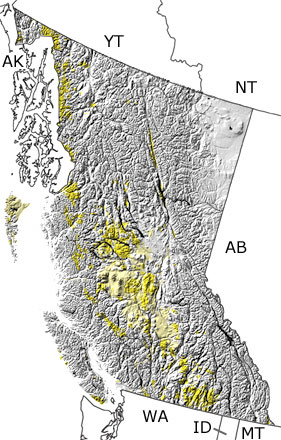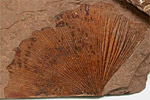Paleontology and geologyThe Tertiary was a time of substantial tectonic activity in British Columbia. Subduction continued to pull oceanic crust under the continent in some areas, while the continental and oceanic plates were sliding past each other along large faults (e.g., Queen Charlotte Fault). Both of these processes brought magma up to the surface under British Columbia, and chains of volcanoes developed near the coast. The province also passed over a hotspot, which left a line of volcanoes from east to west across the middle, and more magma reached the surface in the east when all this movement pulled the crust apart. Large amounts of melted rock were pushed up below older rocks, uplifting the province and forming the granite rocks of the Coast Ranges. All this activity created more faults throughout the province, which developed into valleys between the mountains. These valleys were filled with sediments eroding from the mountains and substantial amounts of ash and lava ejected from the volcanoes. Deposits that formed in these valleys and on Vancouver Island preserve fossils of fish, insects, crustaceans, and many different plants. The conifer needles, fern fronds, mosses, and leaves, seeds, and fruit form flowering plants reveal a greater number of more modern forms. |



